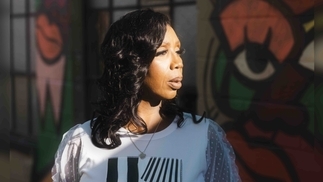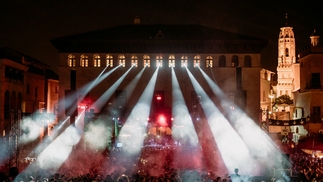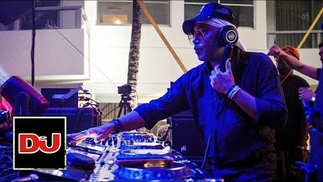Carl Craig's Orchestra: In the zone
We catch up to find out all about his new project...
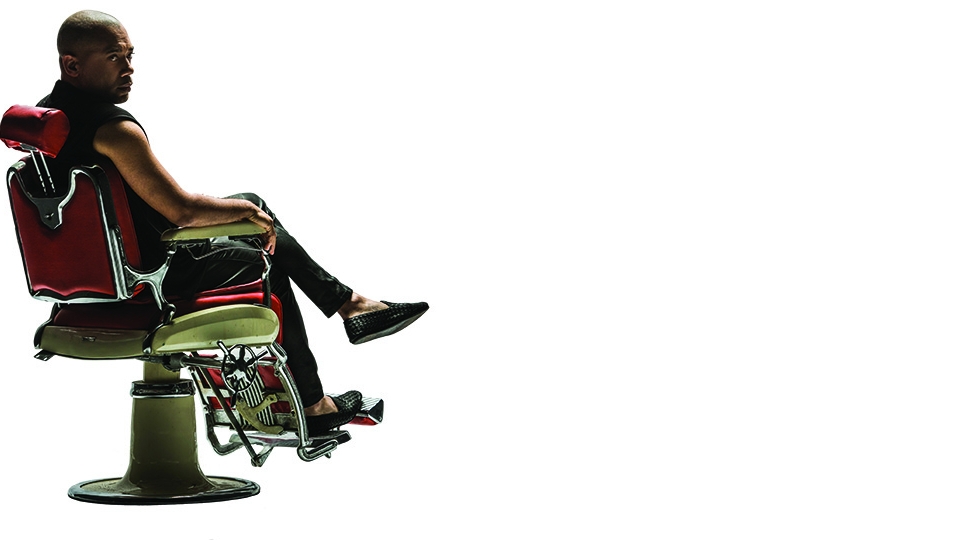
Carl Craig, one of the most important artists in techno, has been working with an orchestra to breathe new life into some of his back catalogue classics. He debuted the resulting ‘Versus’ album at DJ Mag HQ the other week, and this labour of love is about to be unleashed onto the world, along with some live shows too, featuring six musicians — including Carl himself — all playing synthesizers. DJ Mag caught up with him on the phone from Miami to hear all about how this collaborative project came to be realised...
Words: RICHARD BROPHY // Pics: EMMANUEL RASTOIN & PIERRE TERDJMAN
-----------
Electronic music evolves at a rapid pace, but sometimes the most radical changes happen slowly. In the case of Carl Craig’s new album, ’Versus’, nearly a decade has gone by since the initial concept took shape on a stage in Paris. In spite of this long gestation period, the Detroit producer’s latest long-player will surely be one of 2017’s landmark albums. More importantly though, it marks a significant development for the techno form as it dovetails seamlessly with classical music.
The origins of ‘Versus’ can be traced back to a one-off live show in 2008, when Craig performed in Paris with Les Siècles Orchestra, conducted by François-Xavier Roth. Also treading the boards during that fateful event was Basic Channel founder Moritz von Oswald and Francesco Tristano, who has worked with Craig on a variety of releases over the years.
So why did it take so long for Craig, the orchestra and his long-term collaborator Tristano — who arranged all of the tracks on ‘Versus’ — to put together the album? “We started out working on this a long, long time ago, it’s been a work in progress for many years,” Craig explains to DJ Mag over a crackling FaceTime connection the afternoon after a gig at the Winter Music Conference in Miami.
“There was a lot of preparation involved because we needed so much time to tweak and perfect it. Also, I wanted the project to be as perfect as possible before it came out. Working with the orchestra meant that we could have all the different parts separated. It allowed for more manipulation than if it was altogether in one room,” he adds.
“I think techno has more to do with an attitude than the instruments or equipment you use, so even though ‘Versus’ uses traditional instruments, it’s still a techno album.”
ROOTS
This approach is a long way from Craig’s roots, and he admits that working on ‘Versus’ was “a big learning curve. This was the first time that I had ever done something like this. I have been involved with projects like The Detroit Experiment, Urban Tribe and Innerzone Orchestra over the years where I wasn’t working alone, but with these projects, I was closer to the type of music production that I’m used to,” he points out.
Unlike those collaborations, ‘Versus’ evolved from a live performance and not off the back of studio sessions. The tracks that feature on the album are derived mainly from Craig’s extensive back catalogue and include classics like ‘At Les’, ‘Desire’ and ‘Domina’, alongside a series of interludes and, somewhat conspicuously, Tristano’s ‘The Melody’ track re-imagined by Les Siècles Orchestra. “‘Melody’ is included because we did it as part of the live performance [in 2008]. Every piece that is on the album was performed live,” Craig tells DJ Mag.
Originally released in 2008, ‘The Melody’ was also the first Tristano arrangement that Craig remixed. It started a creative relationship that has flourished over the intervening years, with the Planet E owner citing the Luxembourg pianist’s role as being central to the production of ‘Versus’. “It was important from the beginning that the project would involve Francesco. He has an intimate relationship with the orchestra, and I don’t. He has a clear idea of what a violin can do, and I don’t,” Carl explains.
“He knows how to take the solo from ‘Desire’ and transform it from a solo originally done using a synth to one with a violin. I’d just walk in with computer print-outs and say, ‘Hey guys, can we make it sound like this?’ and that just wouldn’t work (laughs).”

Craig is also refreshingly honest about the recording process and says that Tristano shielded him from any possible dissent within the orchestra. “There was tons of tension,” he reveals. “With Francesco and I it’s always smooth sailing, but when someone comes between us, that’s when the tension happened.”
Nonetheless, he says that he was willing to be guided by the orchestra and he had no problem assuming the new role of pupil. “It was a very new situation for me. I had to let the conductor be the boss, but I was totally open to that. I have a bit of history following a conductor, as I was a musician as a kid. I can’t be boss all the time (laughs), you just gotta swallow your ego and be a follower rather than a leader. I had no problem with it because it’s really important for artists to be the pupil and not always the teacher, to learn from the experiences of others,” he says.
Certainly, his willingness to allow others to take the lead has paid off. ‘Versus’ is unique in that it maps out a new, seamless fusion of techno and classical music. On the new version of 2005’s ‘Darkness’, it is impossible to tell where the acoustic elements end and the electronic components start as Craig and his collaborators fuse dramatic strings and a mechanical, metallic groove to create a shimmeringly futuristic new version.
“I get what you’re saying about ‘Darkness’ — the whole album is that way,” he says. “Part of what I wanted to achieve with ‘Versus’ was to get to the point where you would not be able to tell the difference between where the traditional instruments and electronic equipment starts and ends. It didn’t need to be like a battle between the acoustic and electronic, the opposite was the case — I wanted it to be seamless.”
NEW FORMS
Elsewhere, other Craig classics assume new forms. ‘At Les’, the beautifully melancholic deep techno track, which originally appeared on 1997’s ‘More Songs About Food & Revolutionary Art’ album, features a four-minute opening section that features strings, woodwind and flutes building up until rolling drums and a buzzing bass bring it to a thrilling crescendo. Similarly on 2004’s ‘Sandstorms’, piano key stabs and raucous brass give way to a pulsing bass and tough kicks.
“When we performed it [‘At Les’] with the orchestra, it became this epic piece as opposed to the dreamy piece that you know from the album,” Carl explains. “A lot of the original pieces turned into these party tracks — ‘Sandstorms’ and ‘Domina’ were like that, and I was happy that they turned out that way. They became the kind of tracks that you could have on while you are having a good time,” he says.
One of the underlying principles driving ‘Versus’ is its author’s willingness to re-interpret some of his benchmark records. However, many people see tracks like ‘Desire’ and ‘Domina’ representing the highest watermark in techno, the closest one can get to perfection. While ‘Desire’ is the subject of a particularly impressive rework — sensuous strings and sonorous piano unravelling over a gentle backbeat — what would Craig say to fans who feel that these tracks should not have been tampered with?
“Of course everyone has their own opinion and is entitled to it, but these are my pieces of music, my tracks,” he says in a slightly defensive tone. “It’s like when you dress yourself — you don’t need to dress like when you did when you were a kid, what you wear needs to grow as you grow and become an adult.”
Carl is at pains to point out that everyone involved in the project was sensitive towards the heritage and calibre of the original material involved. “Sometimes an artist updating their catalogue can sound very corny, and we were all conscious of not sounding corny. But by doing these tracks with Francesco and the orchestra, it meant it felt like we were doing them in a proper, respectful manner,” Craig feels.
“Sometimes this [doing new versions of old songs] really works out very well,” he points out. “For example, I was looking recently for the original version of a song called ‘Be Thankful For What You’ve Got’. It was originally performed by [soul/R&B singer-songwriter] William deVaughn and then later by Massive Attack, but while I was searching for the original, I found that deVaughn had done a more recent version and his new spin on it was really cool.”
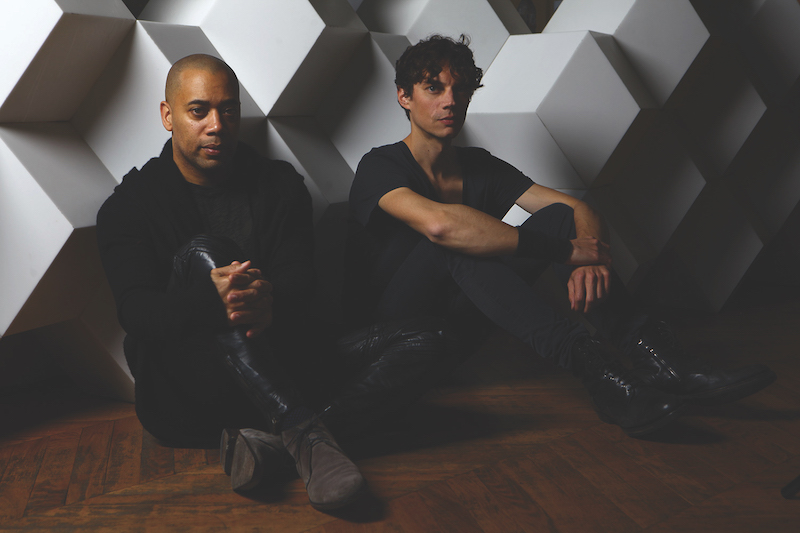
ORCHESTRAL
While working in a new way, Craig still kept his focus on existing material. Given that he was performing and producing in this environment, was he not tempted to record new material with them? “When we first performed ‘Versus’ back in 2008, there could have been pieces written then, but not all of my music is transferrable to that format. The next ‘Versus’ could look at that [new material] and it’s certainly in the back of my mind,” he points out, while explaining that there were other considerations as to why they didn’t produce new music.
“At the time when we did the show, I didn’t know if any recording would be with the same orchestra or with different performers,” he continues. “I also wanted to take the project on the road to see how that would work out. The thing is that working with orchestras is quite different to touring as a DJ. It requires a lot more preparation and planning, and many orchestras are likely to be booked up in advance for two years. We are definitely going to do live shows for the album and we have about 10 gigs already planned with just synths — there may be some orchestral performances,” Carl says.
‘Versus’ is a long, long way from the Detroit producer’s roots, but it is also a logical progression both for Craig and for techno generally. DJ Mag asks him if he feels that working with classical musicians, conductors and orchestras means that techno music has developed into a very ‘grown-up’ form? “You know, techno has always been typecast as being made just with drum machines, with 909s and 808s, but that’s only because the guys who were starting out had no other devices or equipment available, so that’s what they used at the time,” he explains.
“I have always used different ways to make music, from my BFC project, which was mainly sample-based, to my Psyche project, where I used MIDI,” he adds. “I think techno has more to do with an attitude than the instruments or equipment you use, so even though ‘Versus’ uses traditional instruments, it’s still a techno album.”
Carl also contrasts the prescriptive structures that techno is boxed in by with the freeform approach afforded to other music styles. “Questioning a techno producer is the same as saying to a band, ‘Well, that isn’t really a rock album because your musicians are using a certain type of drum or guitar’. How stupid would that sound?” he asks, incredulously.
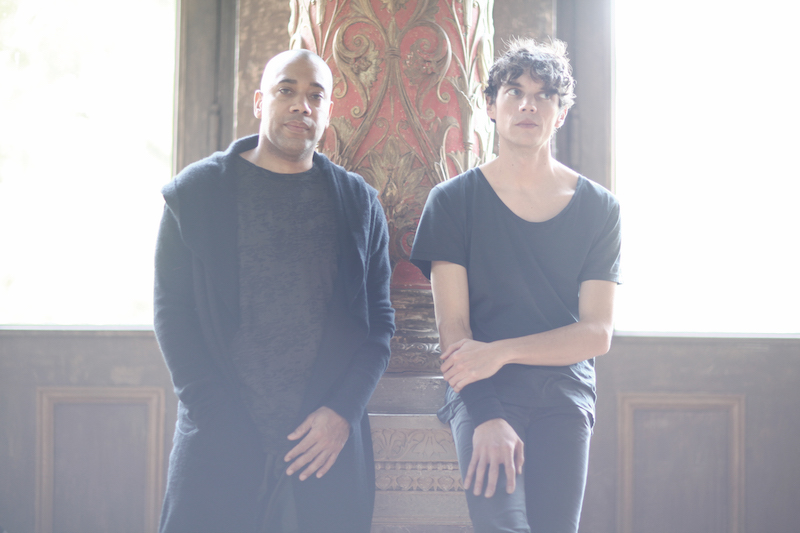
JAZZ
Craig has form when it comes to pushing electronic music’s boundaries. ‘Bug In The Bassbin’, his 1992 track as Innerzone Orchestra, was one of jungle’s earliest iterations, and he teased out this sound further with a series of mind-blowing live shows later on that decade. This writer has especially fond memories of watching Innerzone Orchestra perform as a fully-fledged jazz band in the Detroit tent at 1997’s Tribal Gathering in Luton.
“Innerzone Orchestra — that was a major experiment for me as an artist,” Craig recalls. “To have these amazing jazz musicians, people like [UK saxophonist] Alan Barnes and the drummer Francisco Mora (formerly of the Sun Ra Arkestra) play with you and to bring them to a club gig, everything you thought about techno gets blown away — you are defying expectations of what techno is about,” he adds.
Given his past experiments, it’s not surprising that he believes the type of collaboration on ‘Versus’ should have come about much sooner than it did. “Yeah, I mean it is something that could have happened much earlier, especially with [Derrick May’s techno opus] ‘Strings Of Life’,” he says. “It is a shame that it didn’t happen 30 years ago, but I guess the understanding wasn’t really there at the time for techno in that world (of orchestras and classical music). There were some classical musicians who worked with Aphex Twin at the time, but ‘Strings Of Life’ didn’t really cross over to a wider audience until Francesco released his version [in 2006].”
In more recent times, this kind of collaboration has become more commonplace. Apart from Craig’s project, Actress and Jeff Mills have worked with classical musicians and Goldie has used the Heritage Orchestra to re-do both ’Timeless’ and his new forthcoming album ‘The Journey Man’, while at the more clubby end of the spectrum, Graeme Park and Mike Pickering have collaborated with an orchestra to reinterpret big tracks from the legendary Hacienda club as ‘Hacienda Classical’.
Like Craig, Mills has worked with orchestras for the best part of a decade. What does Craig make of his fellow Detroit native’s work in this area? “Jeff is a visionary; he has been a trail-blazer in the integration of techno music and classical, but the direction he headed in is different to mine,” Carl believes.
“Jeff’s approach is one man, one drum machine and an orchestra, whereas mine is more collaborative. I think what I do has more of a band attitude, rather than Jeff’s idea to use a drum machine to work with an orchestra.”

CONVERTED
Taking this approach is likely to demystify Craig’s music and introduce it to many, but does he feel there is also a danger that ‘Versus’ will be preaching to the converted, e.g. a techno audience?
“I believe there will be a wider audience, there will be people who will want to see what it is really about. They might love electronic music but are also curious about what it sounds like or works like with an orchestra,” he says, and points out that it may inspire some people to explore Detroit techno’s rich heritage.
“I hope that it’ll interest people of all types, people who want to advance themselves musically,” he continues. “It just depends on how much someone wants to learn more about it. My hope is that people who hear ‘Versus’ and like it will do some background checks, they will go to Wikipedia and Discogs and find out about Detroit, Derrick May, Juan Atkins and Kevin Saunderson. They just need to have an inquisitive mind.”
Craig adds that when he was younger, a thirst for finding out more also drove him to engage in extensive research. The key difference back then were his methods. “When I was young, before the internet existed, I found out about a lot of music by looking at the back of B52’s, Parliament or Funkadelic records,” he says. “You see all the people involved and then as time goes by, you stumble across a record in a store and then you remember, ‘Hey this guy, he was on a Parliament record’. Nowadays, it’s like six degrees of separation, and you can find out much faster now than you could in the ‘80s about the ways of these great musicians. I mean, I didn’t know for the longest time that Junie Morrison (from Funkadelic and cowriter of ‘One Nation Under A Groove’) was also in the Ohio Players.”
Presenting his music in this manner will invariably open it up to a new audience. In the absence of any new material, ‘Versus’ does focus almost exclusively on Craig’s work from the ‘90s and early ‘00s — and its centrepiece comprises classics like ‘Desire’, ‘Domina’ and ‘At Les’. Does he view this period in his own catalogue and in the wider techno firmament as a golden period? “No, I don’t think of any of it as a golden age or period,” he feels. “If you look at Motown, different people will say that different decades — the ‘50s, the ‘60s or the ‘70s — were the golden periods. It’s just all great music, and there is still always the possibility that music is going to explode.”
“Just look at hip-hop. You could say its golden period was when Run DMC came out, or when Nas was in his prime, or when A Tribe Called Quest put out ‘Low End Theory’. I don’t like the idea of saying that one time is better than another for music because it ages the person and it ages the music — and I don’t want to fall into that trap. There is always going to be great music, and I don’t want to close myself off. There’s nothing worse than someone saying, ‘This music nowadays isn’t as good as when I was young’. It’s like, ‘Shut up you old geezer!’”
Not that there’s anything wrong with getting old. Having spent the best part of a decade developing a one-off live performance into an album, Craig has no plans to take early retirement or fade into obscurity. While the first and second waves of Detroit techno producers are in their 40s and 50s, Carl does not see age as a barrier and draws inspiration from people who have worked with music their whole lives.
“See, that’s why I respect guys like Clive Davis (founder of Arista and J Records) and Quincy Jones, these cats who have been in the industry for so long. I mean Davis, he was always discovering new artists, he was 66 at the time when he discovered Alicia Keys. I respect these industry people who have been around for years, say someone like Ahmet Eretegun (founder of Atlantic Records, who signed The Doors). That is the type of person I would like to be,” Carl says.
‘Versus’ is the latest Carl Craig experiment, and is highly unlikely to be his last. As he says before he heads back into the blazing Miami sun: “I am doing this until the day I die. Even if it’s time for my hearing to go and I’m deaf, I will find a way to still make music. That’s just the way it is, I live and breathe what I do.”
- ‘Versus’ is out 5th May on InFiné

